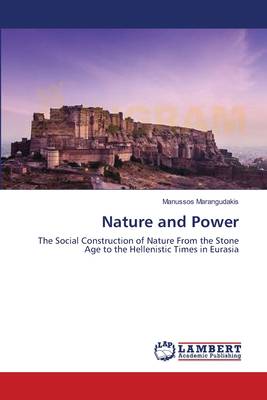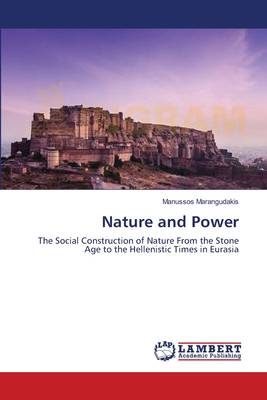
- Afhalen na 1 uur in een winkel met voorraad
- Gratis thuislevering in België vanaf € 30
- Ruim aanbod met 7 miljoen producten
- Afhalen na 1 uur in een winkel met voorraad
- Gratis thuislevering in België vanaf € 30
- Ruim aanbod met 7 miljoen producten
Zoeken
Nature and Power
The Social Construction of Nature From the Stone Age to the Hellenistic Times in Eurasia
Manussos Marangudakis
Paperback | Engels
€ 108,45
+ 216 punten
Omschrijving
Were the ancients more friendly to Nature than us the moderns? Is there any moment in time that heralds the Great Divide between humans and nature? How could we account for environmental collapses such as the Pleistocene Overkill, massive deforestations and desertifications that occurred in the midst of peoples who worshiped Mother Nature? The monograph explores the social patterns of the ancient world as they are structured around three distinct phases of social evolution: (a) hunters and gatherers, (b) sedentary communities, and (c) civilizational centers of intense social inequality. The study juxtaposes economic vis. ideological social networks of power to identify the relation and the interaction between distinct social processes and structures that signify the unique ways humans exploited nature and built their worldviews.
Specificaties
Betrokkenen
- Auteur(s):
- Uitgeverij:
Inhoud
- Aantal bladzijden:
- 312
- Taal:
- Engels
Eigenschappen
- Productcode (EAN):
- 9783659562082
- Verschijningsdatum:
- 20/06/2014
- Uitvoering:
- Paperback
- Afmetingen:
- 150 mm x 18 mm
- Gewicht:
- 431 g

Alleen bij Standaard Boekhandel
+ 216 punten op je klantenkaart van Standaard Boekhandel
Beoordelingen
We publiceren alleen reviews die voldoen aan de voorwaarden voor reviews. Bekijk onze voorwaarden voor reviews.








